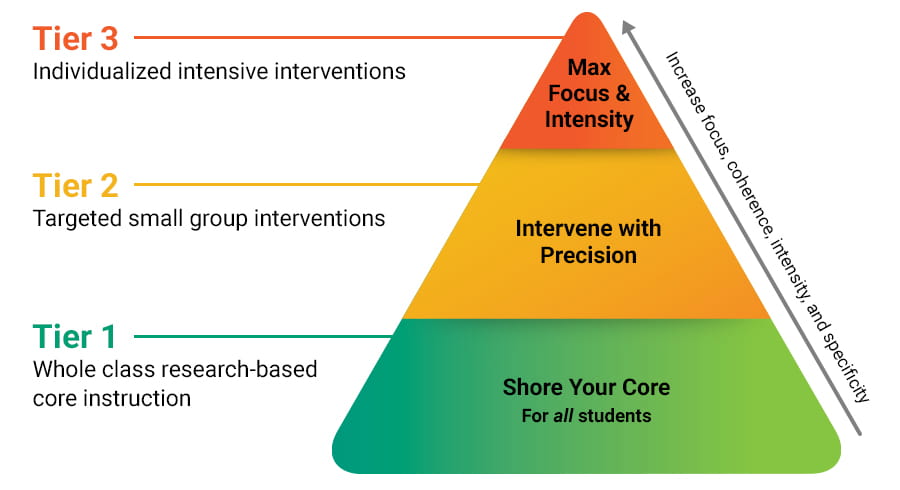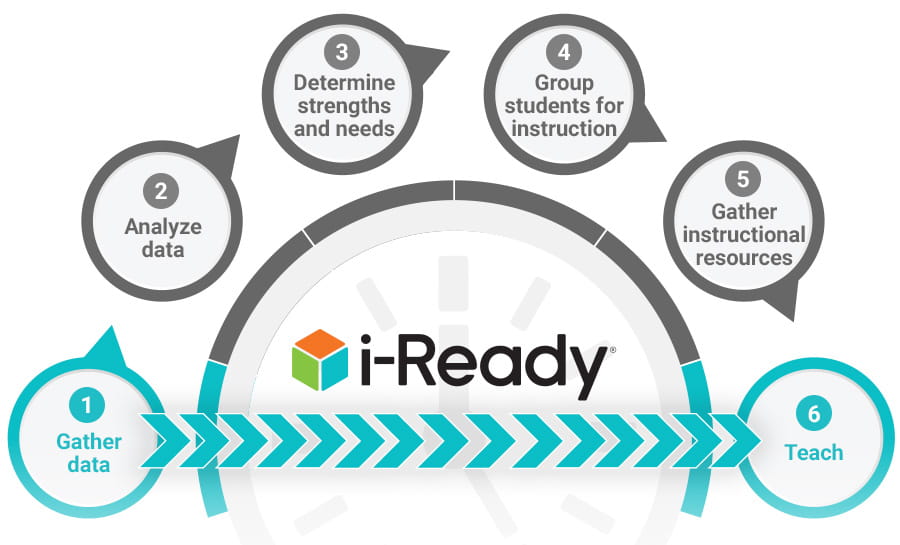
RTI and MTSS are two popular, evidence-based approaches to intervention that both use academic assessment data to inform instruction and provide support for students. Their purpose is to help you identify students who may have learning difficulties and intervene early to provide the instructional support they need to thrive.
When it comes to intervention, there’s no one-size-fits-all solution. But at a baseline, any solution you choose should be able to help you accomplish all the following:
RTI tiers indicate what level of intervention a student needs to be successful. They help teachers know where to increase the focus and intensity of instruction. We define RTI tiers of support as follows:
With the reports in the i-Ready Assessment suite, teachers can pinpoint—down to the domain level—exactly where each learner is and how to best support them.

Universal screening is the first step in any evidence-based intervention program. Why? Because we need to know our students deeply. By screening all students a few times a year, schools can identify indicators of early risk factors and prevent the development of more significant difficulties down the road. Ideally, a screening assessment can provide data on multiple targeted skills so teachers get a profile of each student and their classroom from a single assessment.
i-Ready Assessment and its easy-to-use reports do just that. Plus, by linking the Grades K–12 Diagnostic student data to a personalized learning path, you reduce the need for multiple tests and eliminate time-consuming steps in the instructional planning process. As a complement to the Diagnostic, i-Ready Literacy Tasks can provide even further insight into student intervention needs.

Once teachers identify students in need of intervention, they must determine what instruction to provide. Identifying the appropriate tools for effective small group and targeted intervention demands planning time and experience, so it’s critical for districts to support teachers with formative data, planning tools, and evidence-based resources.
With i-Ready Assessment, teachers receive screening results that include priority domains for teaching, instructional groupings, and targeted supports for small group and individualized intervention.
“Somehow the education system has failed these kids, and that’s not their fault. i-Ready gives us the precision to know where to go and what to do to fill the gaps. We tell students, ‘We’ve got ya! Now let’s do this.’” Malissa Esquibel
Intervention Specialist, San Bernardino City Unified School District
Evaluating the success of intervention efforts requires robust and reliable progress monitoring. With well-designed assessments, progress monitoring allows teachers to understand where their students are and how far they need to go to get to grade-level proficiency. Ideally, a single assessment can be used for multiple purposes, including:
i-Ready Assessment enables educators to evaluate the success of interventions, plus get insight into whether students will meet their growth expectations. Instantly available, easy-to-use reports show student performance data at the student, classroom, grade, school, and district level.
As a partner to thousands of school districts across the US, we understand that RTI/MTSS models differ from state to state and district to district. We offer flexible tools that educators can use to customize RTI/MTSS experiences based on their students’ needs.
i-Ready's integrated system of assessments, instructional resources, personalized online instruction, and reliable progress monitoring tools can help students achieve grade-level proficiency, no matter where they are in their academic journey. Contact us so we can help you find a solution that’s just right for you.